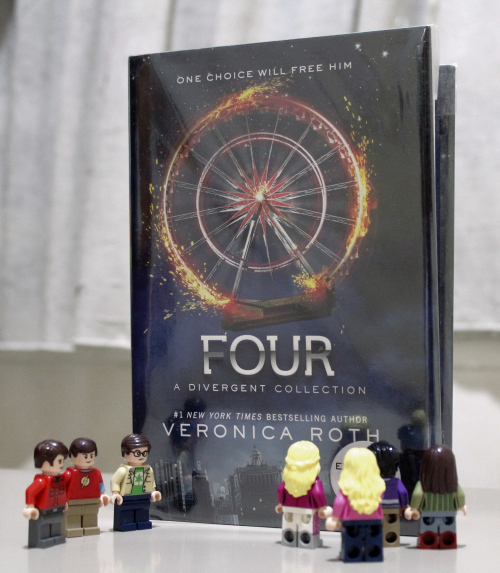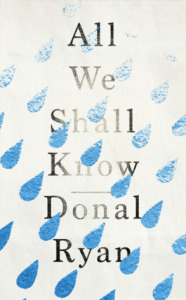By Ian G. Wilson
 Here’s a good one: What time is it when your house is haunted by a ghost? Time to move to a new house. Or: What happened to the ghost who was lost in the fog? She was mist. Okay, poor jokes aside, Carol Goodman’s new suspense novel, The Widow’s House does indeed have a haunted mansion and fog (and rain and snow and ice, and just about every meteorological condition possible). To call it atmospheric would be an understatement.
Here’s a good one: What time is it when your house is haunted by a ghost? Time to move to a new house. Or: What happened to the ghost who was lost in the fog? She was mist. Okay, poor jokes aside, Carol Goodman’s new suspense novel, The Widow’s House does indeed have a haunted mansion and fog (and rain and snow and ice, and just about every meteorological condition possible). To call it atmospheric would be an understatement.
Our heroine is Clare Martin, an aspiring writer whose career has taken a backseat to that of her husband Jess, who wrote a highly acclaimed literary novel and has spent the last several years trying to come up with a second one. The couple has spent the generous advance on the novel, Jess has refused a teaching position, and Clare’s income as an editor isn’t sufficient to keep them in style in their New York City loft. So they decide to sell and move upstate, where they hope Jess will be able to complete his work and Clare’s own writing career may blossom.
Unfortunately, the couple can’t afford anything in the area around Concord, where Clare grew up. But when the owner of River House (called Riven or The Widow’s House by the locals) needs a caretaker for his property, Clare and Jess agree to take the job on. The mansion is an old pile, and the land around it overgrown and unkempt:
“It stood on a rise above a curve in the river like a medieval watchtower. The old brick was mellowed with age and warmed from centuries of river light, the windows made from wavy cockled glass with tiny bubbles in it that held the light like good champagne. The sunken gardens surrounding an ornamental pond were already cool and dark, promising a dusky retreat even on the hottest summer day. For a moment I thought I heard glasses clinking and laughter from a long-ago summer party but then I realized it was just some old wind chimes hanging from the gatehouse. There hadn’t been any parties here for a while. When the sun went behind a cloud and the golden glow disappeared my eyes lingered more on the missing slate tiles in the roof, the weeds growing up between the paving stones of the front flagstones, the paint peeling off the porch columns, and the cracked and crumbling front steps. I even thought I could detect on the river breeze the smell of rot and mildew.”
You might suppose that when a rattlesnake jumps out of the mailbox when they’re viewing the property that Clare and Jess would take it as a hint to get out of town while they still can. Undaunted, however, they stroll up to the house to meet the owner. He turns out to be their former college writing professor, Alden Montague, known somewhat affectionately as Monty. He is a shriveled old man on his last legs who has a taste for drink and young women, and, as a reader, I wondered if his interest in Clare was strictly professional. It does turn out that Monty has always viewed her as a more talented writer than her husband, and he encourages her to write a novel based on an old legend about the house.
Enter the ghost, one Mary Foley, the local Apple Blossom Queen who was stolen away from her fiancé by Monty’s father and abandoned when she became pregnant. Legend has it that she left her baby to die of exposure on the front doorstep of Riven House while she drowned herself in the icy waters of a pond on the property. Clare starts seeing Mary’s ghost near the pond and hearing the crying of an infant. She becomes obsessed with the story of Mary Foley and starts digging into her background.
The Widow’s House is full of weird characters, from old Monty to Sunny, the local maker of creepy puppets, who lives in a barn on the property, to Katrine, a sinister real estate agent who seems to have relatives all over Concord. But when one of these people turns up dead, the question of suicide or murder raises its head, and it is up to Clare to figure out what is going on. Jess becomes more and more distant toward her, and she begins to wonder whether he is having an affair.
Charlotte Perkins Gilman’s fine story “The Yellow Wallpaper” is referenced more than once in the novel, and, as in that piece, we begin to see the narrator’s mind disintegrating. But is Clare really dissolving into paranoia, or is she the target of a sinister scheme perpetrated by her husband?
Goodman’s descriptions of Clare’s reactions to the house’s furnishings are true to gothic form; I doubt even Anne Radcliffe could do better than the following:
“The rotunda was awash in moonlight and shadow. The wind was blowing leaves over the oculus, splattering their shadows down the broad marble steps. The house felt restless tonight, as if it was excited about what had happened out on the weir. It seemed to have taken up Jess’s delirious mutterings. So much blood.
“Moonlight splashed over the portrait of Bayard Montague at the top of the stairs, dredging his fish-belly face out of the shadows, his cold eyes staring at me askance. I’d brought the reek and stain of blood into his house, defiling the pristine marble steps. I looked down the stairs and saw bloody footprints . . . which shifted at the next stir of leaves over the oculus and became leaf shadow. The blood on my clothes was dry.”
Nothing says gothic suspense like a creepy old portrait, does it?
The Widow’s House is a fast-paced read, with plenty of twists and turns in its plot. Goodman writes well and has a flair for figurative language that I don’t often see in genre fiction. The isolated setting of the house, especially as autumn turns to winter, is played up for all it’s worth, which I like to see—a ghost story should have plenty of atmosphere. And Goodman adroitly builds tension as she makes the reader fear for Clare’s safety and sanity. Some of the genealogical information sprinkled liberally throughout the story of Mary Foley can get a bit confusing, though I imagine that is typical of genealogical information, factual or fictional. I recommend the book highly for lovers of good supernatural suspense stories.
Carol Goodman is the author of a number of “literary thrillers” sounding similarly atmospheric to The Widow’s House. These include The Seduction of Water (winner of the 2003 Hammett Prize), The Drowning Tree (2004), and The Lake of Dead Languages (2005). Her flair for evocative titles makes me envious.
The Widow’s House was published by in 2017 by Harper Collins. It is available now at Greenville Public Library.
Share this:




